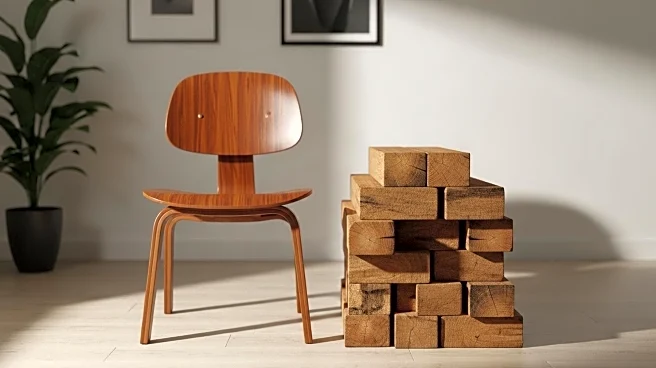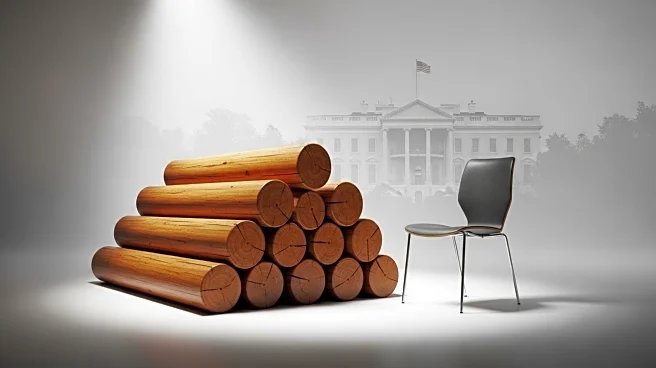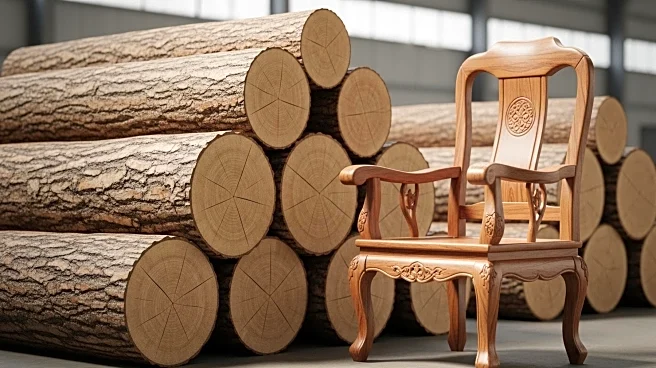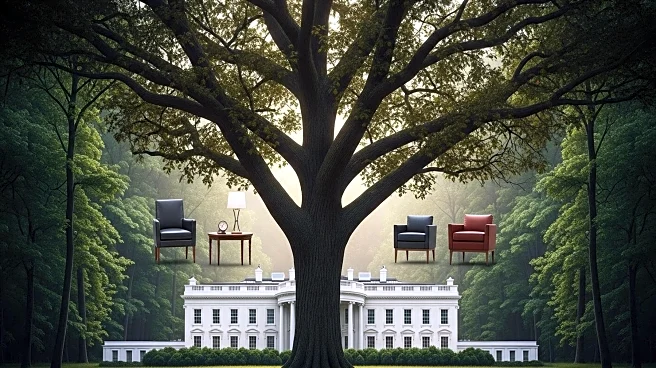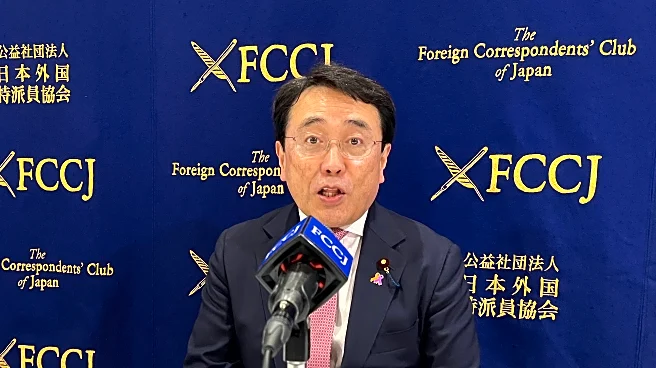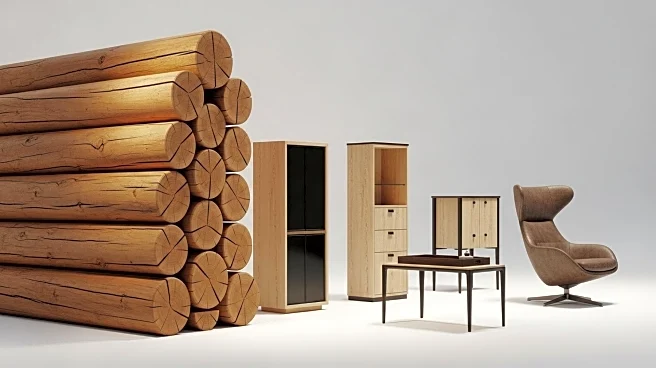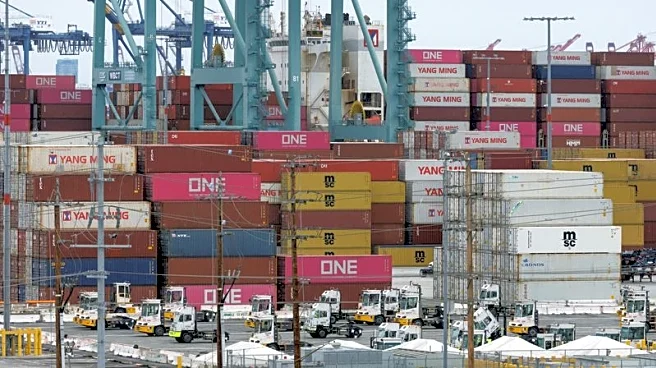What is the story about?
What's Happening?
The White House has announced new tariffs on timber, lumber, and derivative products, effective October 14, as part of an effort to bolster American industry and protect national security. President Trump issued an executive order following an investigation by Secretary of Commerce Howard Lutnick, which found that the importation of these products threatens to impair U.S. national security. The tariffs include a 10% tariff on global imports of softwood lumber, a 25% tariff on certain upholstered furniture, and a 25% tariff on kitchen cabinets and vanities, with increases scheduled for January 1. The United Kingdom, European Union, and Japan will receive more favorable treatment due to existing trade deals.
Why It's Important?
These tariffs aim to protect U.S. manufacturers from import price competition and promote onshoring of manufacturing. The tariffs could lead to increased costs for importers, who may pass these costs onto U.S. consumers. The move is expected to increase U.S. government tariff revenues rather than replace imports with U.S.-made products. The decision reflects ongoing geopolitical tensions and efforts to strengthen domestic industries critical to national defense and infrastructure.
What's Next?
Importers may negotiate with foreign suppliers to adjust prices, potentially lowering margins or increasing prices for U.S. customers. Trading partners may seek alternatives to the tariffs through negotiations. The tariffs could lead to shifts in supply chain strategies and impact international trade relations.
Beyond the Headlines
The tariffs highlight the intersection of trade policy and national security concerns, emphasizing the U.S. government's focus on protecting critical industries. The decision may influence future trade negotiations and impact global supply chain dynamics.
AI Generated Content
Do you find this article useful?


